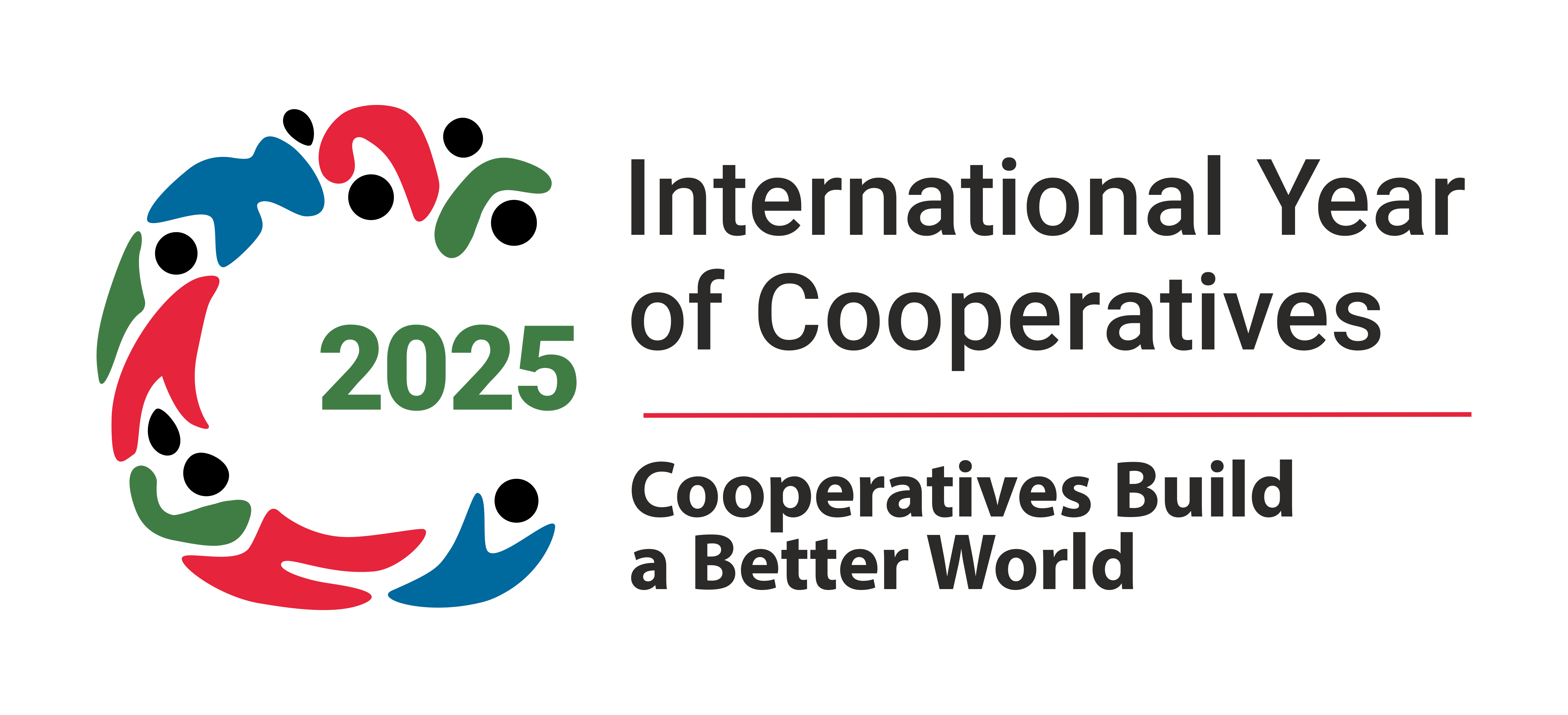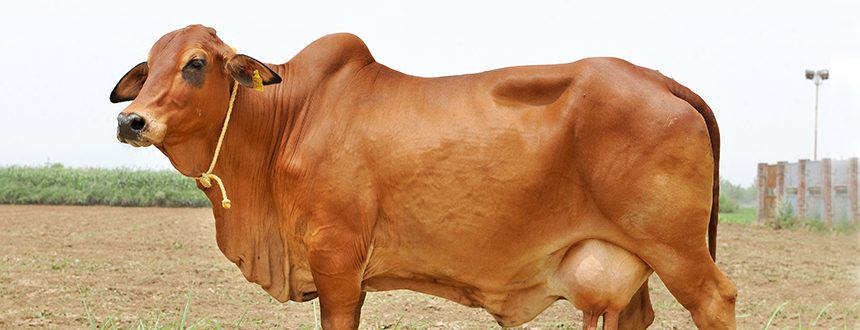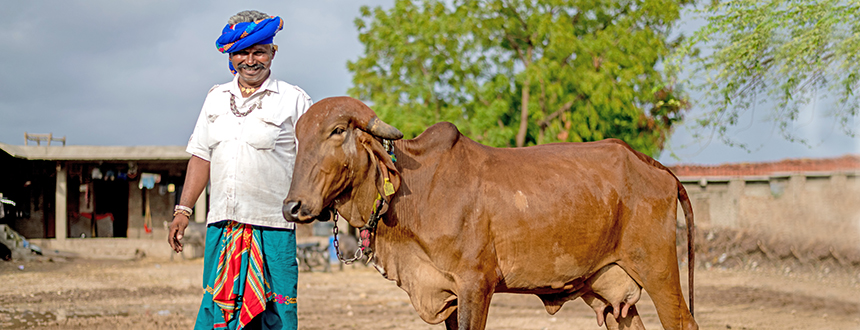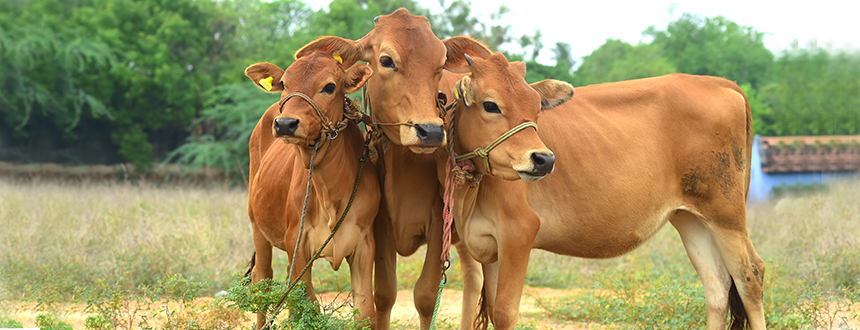FAQs
1. What are the advantages of Artificial Insemination (AI) over Natural Service?
With artificial insemination, a bull can breed more than 20,000 cows per year whereas with natural service no more than 200 could be bred. Hence, when artificial insemination is followed, for the same number of cows, a very few bulls are required compared to natural service. This means a very few best bulls could be used for AI leading to faster genetic progress. Moreover, there is much less risk of transmission of venereal diseases and detrimental recessive alleles. Besides, AI is economical. A high pedigreed bull can also be used even after its death if its frozen semen doses are stored and frozen semen doses can be shared even between continents.
2. How is AI different from natural service?
In natural service, the cow is taken to the bull for mating whereas in artificial insemination, the cow is artificially inseminated by a trained AI technician with a frozen semen dose of a bull maintained at a recognised semen station.
3. Is AI a treatment for infertility/ repeat breeding?
No, Artificial Insemination is not a treatment for infertility or repeat breeding. It is an artificial method to inseminate an animal with semen of disease free genetically superior pedigreed bull. It helps in preventing transmission of diseases through natural service. If an animal is not able to conceive through natural service due to infertility then it won’t be able to conceive through artificial insemination also.
4. Is there an advantage of using more than one dose in one heat?
One frozen semen dose straw (0.25 ml capacity) is sufficient for the successful conception of an animal if AI is done at correct time of heat using good quality semen and using correct AI technique following SOP. However, in a few cases if the heat period is extended beyond normal duration (12 -18 hours), ovulation is also delayed and in such cases, second insemination may be required after 24 hours.
5. Should I take the animal to a bull after AI?
No, the animal should never be taken to a bull after AI.
6. What is the ideal success rate of AI?
Success rate of 40% and above is considered ideal.
7. Whether AI is successful in buffaloes?
Yes, AI in buffaloes is as successful as in cows. The only problem one may encounter with buffaloes is that they often do not exhibit heat symptoms very overtly during heat
8. There are multiple AI services providers in my area, how should I choose the correct AI service provider? What should I look for when AI Technician (AIT) is inseminating my animal?
The AIT, who uses frozen semen produced by A or B graded semen station and stores and carries it in proper cryocans (not in pocket or thermos or in water or on ice), should only be chosen. Name of the semen station is written on the semen straw, farmers’ should insist to see Sire Directory to ascertain the pedigree of the bull and grade of the semen station. While AIT is doing AI, it should be ensured that AIT is following SOP for AI. The Do’s and Don’ts of AI need to followed for better results
9. How to detect animal in heat? What is the right time of AI? What is silent heat?
The animal will show clear symptoms of heat like mounting on other animals, standing to be mounted, swollen vulva, frequent urination, restlessness, and bellowing. Long and clear strands of cervical mucus discharge will be seen hanging from the vulva. The animal will become off-fed and milk production will go down.
The right time to inseminate an animal is 12 hours after detection of heat. An animal detected in heat in the morning should be inseminated in the evening and the one detected in the evening should be inseminated the next morning. However, final decision to perform an AI should be taken after confirmation of the heat stage and quality of cervical discharge through rectal palpation.
Buffaloes often do not exhibit profound signs of heat, which is called as silent heat. In silent heat, the animal shows no sign or very few behavioural signs of heat and that too for a very short duration.
10. What is State breeding policy? Why should it be followed?
Every state has defined its own breeding policy based on geographical and climatic conditions of the state and distribution of different breeds in the state. Breeding policy is a guideline to indicate what breed and breed combination or exotic blood level is most suitable in the given agro climatic condition of the state. It should be followed to get the optimum output from your animals and to conserve the breed available in the state.
11. What type of semen should be used to breed different types of animals? Whether AIT carries all types/breeds of semen so that I can choose the best option for my animal? What is sire directory? Is it available with every AIT?
Semen used for upgrading non-descript animals and for well-defined breeds should be in accordance with the breeding policy of the state. Semen procured only from A and B graded semen stations should be used.
All AITs may not always carry the semen as per the breeding policy of the state so being an aware and progressive farmer, one should be vigilant and should insist to know the breed, exotic blood level and pedigree details of the bull, the semen of which is being used to breed your animal.
Sire directory is a record containing entire pedigree details of each bull in the semen station. Farmers can check INAPH sire directory to know more about AI bull. Ideally it should be available with AI service provider, if not, then the farmer may ask the service provider to obtain it from the semen station.
12. What is good quality semen? How to find out whether the semen used by the AIT is produced by ‘A’ or ‘B’ grade semen station?
Semen doses procured from A and B graded semen stations are supposed to be of good quality. However the farmer can check the Bull ID and semen station name printed on the straw.
Sire Directory usually have the details of grades awarded to the semen station.
13. Why are animals being ear tagged? How is it beneficial to me?
The animals are tagged to give a unique identity number to each and every animal in the country. Once the animal is ear tagged, all the activities (AI, pregnancy diagnosis, calving, milk recording, vaccination, health information) performed on that animal could be recorded in the national database and each and every animal will have a complete record of all the activities performed on it.
This would help in identifying which bull has produced the best performing progenies and thus would be able to demand/choose best bulls for breeding animals. Further, it would be beneficial during insurance, purchase and sale of animal as authentic information can be availed.
14. What is sexed semen? Where it is available? What is the cost? Is it available with all AI technicians? How to verify whether sexed semen has been used for my animal? Is it available for all breeds of cattle and for buffaloes also? What are the advantages of using sexed semen over conventional semen? What is the success rate?
Sexed semen is the semen which contains mainly either X bearing or Y bearing viable spermatozoa to produce progenies of a desired sex with about 80-90 per cent accuracy.
Currently 5 semen stations are producing sexed semen in India.
Sexed semen is available at the rate of Rs 900 to 2,000 per dose however some states are making it available at subsidised rate of Rs 100-300. Sexed semen is not available with all AITs.
To verify whether sexed semen has been used or not, the straw can be checked for the source of sexed semen and reliability of the source. Sexed semen is available for some of the breeds of cattle (Gir, Sahiwal, Tharparkar, Kankrej, Red Sindhi, Hariana, Gangatiri, CBHF/ CBJ and pure HF and Jersey etc.) and buffalo (Mehsana, Murrah and Jaffarabadi). Moreover, semen stations are including new breeds into their catalogues on demand for any breed. Further, imported sexed semen doses are also available with few organization.
Use of sexed semen guarantees 80-90 per cent accuracy of desired sex as compared to conventional semen straw where Male: Female ratio is about 50:50.
As sperm concentration in sexed semen straw is less as compared to conventional semen straw and sexing procedure pose a great deal of injury to the sexed sperm, conception rate is around 10 per cent less with sexed semen as compared to normal semen. However, with advancement of technology and sexing equipment, the gap between sexed and conventional semen in terms of conception rate is narrowing.
15. What is embryo transfer? Is it an alternative to AI to get my cow/buffalo conceived? My cow/buffalo is not getting conceived in spite of repeated AI, can I use ET to get them conceived? Who can provide me ET services? What is the cost? Can I have a choice of sex of calf through ET?
In embryo transfer technique, the embryos produced out of elite cow and bull is transferred to recipient animal which acts as a surrogate mother and carries the embryo to full term pregnancy. Embryos can be produced through MOET or IVF technique. ET is a technique to increase the reproduction rate of genetically superior females – to get more calves in a life time than possible through normal reproduction.
No, ET is not an alternative to AI to get the animal conceived. If your cow/ buffalo is not getting conceived in spite of repeated AI, it is not likely to get conceived by ET. For ET one needs reproductively healthy animals.
Presently few organisations are providing ET services to farmers’ level at limited scale (SAG, Bidaj; JK Trust, Pune etc.). NDDB also operates an R&D and training embryo transfer facility. Further, ET is being carried out by a few organisations in India namely SAG Bidaj, Kalsi ULDB, PBGSBS Haringhata, PLDB Punjab, GADVASU Punjab, Palampur HPLDB, NDRI Karnal, Niblet Barabanki UPLDB, MPSLPDC Bhadbhada, BAIF Pune, Lam Farm Guntur APLDA, Mattupatty KLDB, DLF Hosur TNLDA etc. , mainly for their own institutional purpose.
Yes, ET does provide a choice on the sex of the calf if sexed semen is used for insemination/ IVF.
An embryo cannot be transferred using an AI gun and it requires specialised transfer equipment, called ET Gun/ Syringe. Therefore, do not believe if a person claims to have an embryo and proposes to transfer it into your animal. Check his antecedents and credentials properly.
16. What is Progeny Testing? Why PT is not done in all breeds? How to select breeding bull without PT? What are their advantages to farmers?
Progeny Testing (PT) programme is a scientifically proven process to evaluate a bull on the basis of the performance of its progenies i.e., is the performance of its daughters. It is for evaluating and selecting bulls of best genetic merit to produce next generation of genetically improved animals.
It serves two purposes
- Top few proven bulls are mated to females with higher breeding value for milk yield to produce the next generation of bulls which are again progeny tested and the cycle continues.
- The bulls thus produced are used for semen production that are used in general AI programme to produce next generation of genetically improved animals.
PT programme is an elaborate and costly programme. It takes a time period of 8 to 9 years to prove a bull. Moreover, there is need of a proper size of breedable female population in a compact area enabling distribution of test doses of the bull under test. PT programme is being carried out for breeds like Gir, Sahiwal, Jersey, HF Cross, Jersey Cross, Murrah and Mehsana.
For those breeds where AI is not popular and an elaborate AI infrastructure does not exist, the bulls are selected based on the performance of its dam. This process is known as Pedigree Selection.
17. Why do we record milk of daughters in Progeny Testing?
In PT programme, the test bull is evaluated on the basis of the performance of its daughters. Therefore for accurate evaluation of bulls, records of milk yield of their daughters is essential.
So we record milk of daughters to judge superiority of genes responsible for milk production in her sire.
18. How Milk recording in general helps the farmer?
Milk recording helps the farmer to get a complete lactation record of his animal. He also gets an idea of performance of his animal as compared to the performance of other animal in his herd and village. This information helps him to take a decision on the animal, whether to retain it, cull it or use it for production of herd replacement.
19. Why are different traits such as body conformation, milk components, growth rate are being measured?
Milk yield is not the sole criteria for judging the performance of the animal. Milk should also be tested for other milk components like fat percentage, protein and lactose content as these parameters decide the market price of milk.
Body conformation and growth rate are highly and positively correlated to production and reproduction traits.
20. Why are my animals being tested for diseases under PT and PS projects?
As PT and PS projects are implemented for production of High Genetic Merit (HGM) bulls which are used for semen production and to ensure production of disease free semen, it is necessary that they are free from certain disease which may be transmitted through semen, therefore whenever HGM bulls are produced, the bull calf as well its mother are tested to confirm their disease free status.
21. Is blood collection harmful to the animal?
No. Blood collection causes no harm to the animals. Very small quantity of blood is collected from the animals to test the animals for certain diseases. This helps in identifying animals which may spread the diseases to the next generation animals or to the humans. In PT projects, blood is also collected from some daughters and all male calves born out of nominated mating to verify their parentage. This is to ensure that the bulls are being evaluated on performance of their own daughters and to ensure bull calves being selected for semen production are really from the elite parents. Blood is also required to test for breed purity, genetic disorders, genomic breeding value estimation etc.
22. What to look for in a dairy animal when one goes to buy one?
While buying dairy animal, look for reliable source in order to get correct information regarding exotic blood level in case of crossbreds, milk production, lactation number, pedigree details, disease and health status, udder health. It is necessary to verify pregnancy status in case of pregnant animals and milk production in case of lactating animals. Further, the animal should be active, the feet should be straight from the back side and strong in built. Chest should be moderately wide. Body, when seen from the side should look wedge shaped. It should not have extra fat as this may affect the fertility. A good dairy animal is usually moderately thin with slightly prominent and wide hip bones.
23. What is an economic animal?
Economic animal is one which produces one calf in a year, resistant to diseases, produce maximum milk with minimum input cost i.e. per litre milk production cost should be minimum.
24. Why improvement of indigenous breeds is important? What are important indigenous breeds and where are they available?
Indigenous breeds are well adapted to our existing agro-climatic conditions and are resistant to many tropical diseases and can survive and produce on marginal and poor feed and fodder resources. Some of these breeds are well known for their high milk and fat production. However, the production potential of these animals has deteriorated over a period of time due to lack of selection. The high producing exotic breeds do not have the above characteristics and are very difficult to manage in tropical Indian scenario. Hence indigenous breeds should be improved.
Important indigenous milch breeds of cattle are Sahiwal in Punjab, Gir and Kankrej from Saurashtra region of Gujarat, Tharparkar from Jodhpur and Jaisalmer districts of Rajasthan, Rathi from Bikaner and Ganganagar districts of Rajasthan and Red Sindhi from Uttarakhand; while buffalo breeds include Murrah from Haryana, Punjab and western UP, Mehsana, Jaffarabadi, and Banni from Gujarat, Nili-Ravi from Punjab and Pandharpuri from Maharashtra.
25. How to improve the fertility of my animal?
Fertility is a function of feeding and management. Healthy animals have high fertility. So, for high fertility, animals need to be fed well balanced diet based on the stage of its life cycle. Additionally, proper heat detection, proper time of insemination, proper technique of insemination, quality of semen used are also some important factors affecting fertility. Reproductive diseases are reason for infertility only in small percentage (15-20 per cent) of animals.
26. How can I get a progeny of better productivity from my existing animals?
Progenies of high producing parents have higher production. Therefore, the existing female animals should be bred using semen from bulls of high genetic merit for milk production. This increases the probability of getting progenies with higher production and productivity. Semen used for breeding your animal needs to be sourced from the reliable source produced from ‘A’ or ‘B’ graded semen station and breeding policy needs to be followed.
27. Which is most suitable animal for Dairying – indigenous cattle, crossbred cattle or buffalo?
Choice of breed or breed combination primarily depends on resource availability, climatic conditions, availability of required inputs (feed and healthcare facilities), availability of market for milk, criteria for milk pricing etc.-In resource poor situations indigenous cattle or buffaloes could be preferred while with moderate to good resources crossbred cattle could be preferred. Places where fat percentage is the price criteria, buffaloes may be preferred.
28. Which is better - a Jersey cross or HF cross animal? What percentage of exotic blood is ideal in a crossbred animal and why?
One should consider resource availability before deciding on breed. If we have low to moderate resources and more humid climate Jersey Crossbred are suitable. If feeding and management is not a constraint, HF Crossbred cows should be preferred. Again if demand is for milk with high fat content, HF crossbred are at disadvantage. In our conditions we should target for 50 per cent exotic inheritance in crossbred animals as with increasing exotic blood level, the animals will be more prone to diseases and heat stress. Management of such animals will be difficult.
29. Some superstitions/ myths connected with AI – produces only male calves, weak calves, reduces milk yield etc.
There are no scientific evidences to support such myths. Analysing a large number of observations, it is observed that there is no adverse effect of AI on male: female ratio, calf birth weight or milk production of existing dam.




